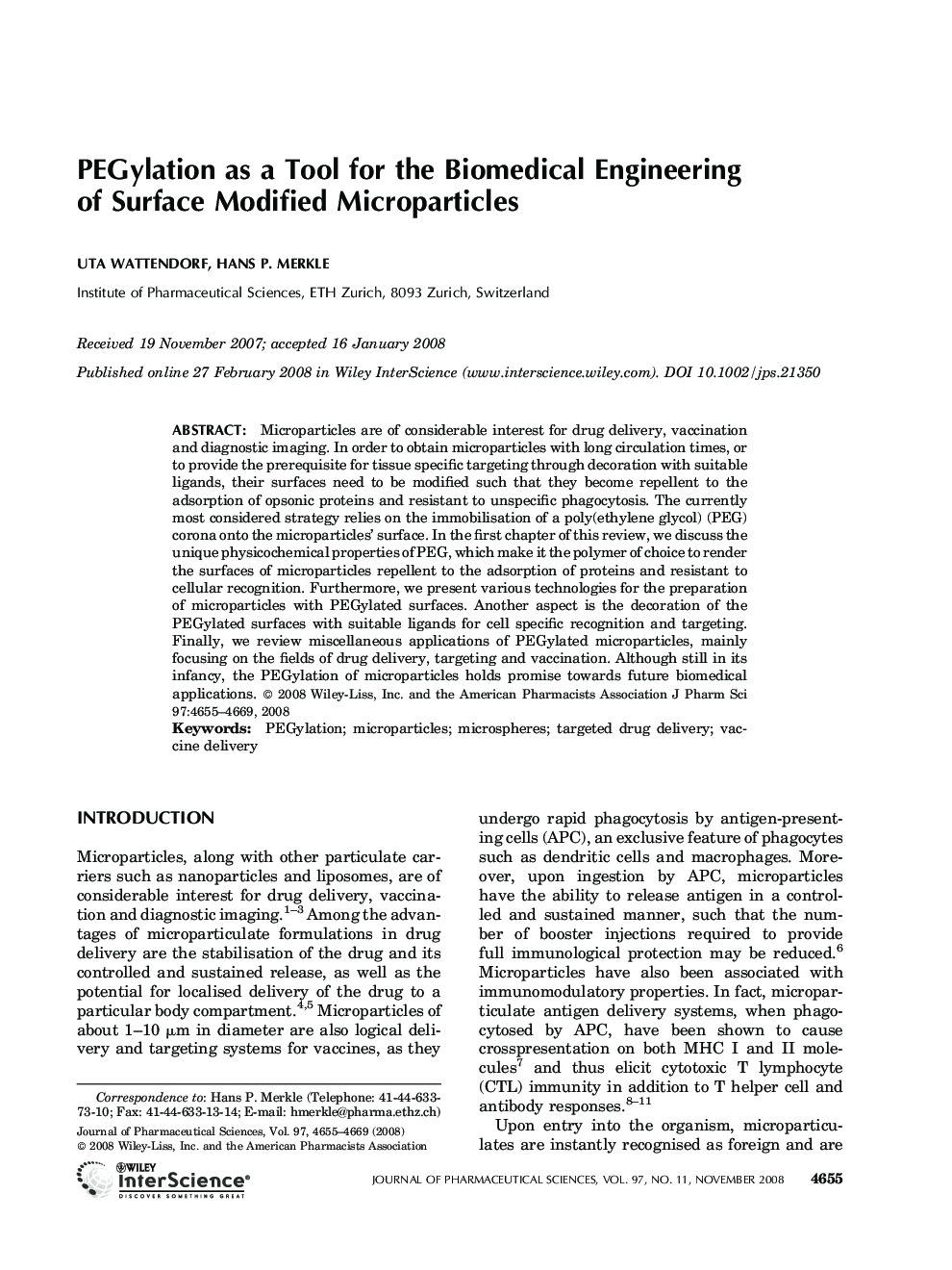| Article ID | Journal | Published Year | Pages | File Type |
|---|---|---|---|---|
| 2487467 | Journal of Pharmaceutical Sciences | 2008 | 15 Pages |
Abstract
Microparticles are of considerable interest for drug delivery, vaccination and diagnostic imaging. In order to obtain microparticles with long circulation times, or to provide the prerequisite for tissue specific targeting through decoration with suitable ligands, their surfaces need to be modified such that they become repellent to the adsorption of opsonic proteins and resistant to unspecific phagocytosis. The currently most considered strategy relies on the immobilisation of a poly(ethylene glycol) (PEG) corona onto the microparticles' surface. In the first chapter of this review, we discuss the unique physicochemical properties of PEG, which make it the polymer of choice to render the surfaces of microparticles repellent to the adsorption of proteins and resistant to cellular recognition. Furthermore, we present various technologies for the preparation of microparticles with PEGylated surfaces. Another aspect is the decoration of the PEGylated surfaces with suitable ligands for cell specific recognition and targeting. Finally, we review miscellaneous applications of PEGylated microparticles, mainly focusing on the fields of drug delivery, targeting and vaccination. Although still in its infancy, the PEGylation of microparticles holds promise towards future biomedical applications.
Related Topics
Health Sciences
Pharmacology, Toxicology and Pharmaceutical Science
Drug Discovery
Authors
Uta Wattendorf, Hans P. Merkle,
